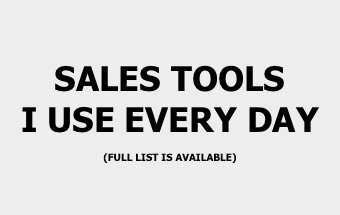Apparently, the average elevator ride in New York City takes 110 seconds. That’s exactly enough time to give an elevator speech.
Realistically though, for you and me, that will probably never happen. At least, not in an actual elevator.
But next time you are on a sales call or a demo, at a conference or a happy hour, on vacation… you get the point. Pretty much anywhere other than an elevator.
You pitch your product, your company, yourself, your ideas all the time. But, probably never prepared an elevator speech to respond appropriately to those impromptu situations (including myself).
So I thought, what if there was a way, or a framework, to pitch any idea instantly? Maybe, something we could quickly reference to assemble the key facts and key issues for any product or idea. So that, our audience, after listening to our pitch, would be so compelled to take action on whatever we asked next.
Because I know, at some point in the future, someone will ask you, what does your product do? Or, what does your company do?
And if, at that moment, you have the tools to deliver the perfect elevator speech, then this guide will have accomplished its goal.
Let’s do this.
The Elevator Speech Guide
Throughout my sales career, I’ve noticed a few patterns during the times when my pitch seemed to work really well.
This framework is based on my own personal experience. And likely influenced by these sales books I read.
Anyways. I’m a visual learner.
And I thought, there’s a good chance you are too.
So, I looked back at the highest selling, most profitable infomercial products over the past 20 years. Because there’s no better way to illustrate a proven elevator speech framework than with successful pitches from the past. Right?
Well, I can’t think of any better way. Otherwise, I would show you that instead.
Ok. Here’s the step by step guide to structure your next elevator speech, with proven product examples for easy reference.
#1 Study Your Audience
Simple, right? Wrong.
When I order a size large dress shirt, it often comes with a mediocre fit. But, the last time I had a tailor take my measurements for a custom dress shirt, it was perfect (bespoke baby).
Same applies to your pitch.
The More You Know About Your Audience,
The More You Can Tailor Your Pitch.
Do this through research and observation.
I don’t know the key data points that are needed to sell your product. You do though. Study them.
Remember, companies like Proctor & Gamble (brands like Crest, Tide, Vicks) spend millions of dollars every year on customer research. Literally, millions of dollars to study their audience.
I’m suggesting you take some time before hand to study your audience.
#2 Ask Clarifying Questions
There is always more information to gather. But you don’t have time to pepper your audience with questions.
Maybe you’ll have time for one or two, max.
Ask questions to gather the key data points.
At one point in my tech sales career, I sold eDiscovery software. When I cold called, the very first question I’d ask was “do you ever handle document intensive litigation cases?”
Made me sound fairly smart. There are some big words in that question (which General Counsels and Attorneys seem to love).
But even more importantly, it gave me the most key piece of information that I couldn’t find online.
#3 Explain the Problem
Your audience will often be confused if you pitch your product before you explain the problem it solves.
Content without context leads to confusion – tweet this.
So, start with where they are. The problem they have.
Do you remember the product Life Alert? Maybe not.
But, ever heard the phrase, “I’ve fallen and I can’t get up.” Bingo. That’s Life Alert. They actually trademarked that phrase.
Most old people have a huge fear of falling down. When they do fall down, it’s a major problem.
Life Alert understood this and focused their entire marketing campaign on it.
The pitch starts with, “Recently when I became deathly ill…” Then, at second 0:28 an old woman brilliantly delivers their famous trademarked line.
Life Alert has sold millions of units. And to this day still employs over 600 people. Incredible!
Explain the problem first, then pitch your audience on how you solve it.
#4 Make an Association
We best understand things based on what we already know.
So why not associate your product with something your audience already knows?
That’s exactly what Shamwow does. Remember Shamwow?
“It’s like a shammy, a towel, a sponge…” Just watch minute 0:16.
You already know what a towel is and a sponge, and because of that, you now know what a Shamwow is.
See how quickly that positions the product in your mind.
Then once you draw that association, it’s good idea to check in with your audience along the way. Just to make sure they understand you.
Simply ask:
Does that make sense?
OR
Do you know what I mean?
Ok, so that’s pretty straightforward. But this next step, is really the most important. Because as soon as you make an association, you’re going to want to immediately distance yourself from it.
#5 Share Your Uniqueness
Nearly as soon as you draw an association, distance yourself from it.
Here’s what I mean by that.
Your audience already knows the problem. They understand how you solve it through the association you just made. Now, it’s time to let them know how you are different.
What sets you apart?
Think about hamburger meat. That’s a fairly commodittized, undifferentiated product. Most people in the grocery store look at the price per pound ($/lb). You know, so they get as much meat for their hard earned dollars.
Well, even in such a crowded market as the “meat market”, it’s still possible to stand out. And you can too, regardless of what you sell.
Wendy’s executes this brilliantly, with their Where’s the Beef campaign. Second 0:10 always seems to make me smile.
Whatever your differentiator is, make it clear. Or else, your audience may be the one asking, “where’s the beef?”
#6 Illustrate the Results
Keep reading. This is the really good stuff.
Now that your audience knows your differentiator, it’s time to lather on the results. Tell them exactly how much it will benefit them.
And be sure to quantify it. Make it real for them with actual numbers. Factually express your remarkable results.
Here’s an example. Take the abstract benefit of beauty. We all want it. But, how do you quantify something so abstract as that?
I’ll tell you how.
You take two pictures of the same person. Take one picture on day zero. Take another picture 6 months later. Then your story line goes accordingly, “this how you look today, use our product and within 6 months, you’ll look like this…”
Who does this better than ProActiv, acne treatment? Nobody.
Well, maybe somebody but they’re a good example. And even better, they share the results through powerful customer testimonials.
The result after second 0:06 is what you pay for… take a look.
Oh, and if you noticed. When you’re all out of product ideas, you can just add the word PLUS to your existing product.
Then when someones asks, “what does the PLUS mean?” You tell them, it means MORE.
“MORE of what?”
More of whatever they had before. That’s right. Much much more.
Ok, in all seriousness. One more step.
#7 Ask for What You Want
Now it’s time to get your bucket and shake that fruit tree.
Presumably, at this point, your elevator speech has completely blown your audience away. Maybe they’re just nodding their head, but inside, explosions!
So it’s time to ask for what you want. Of course, you want to frame the ask in the context of what they want. But, regardless, now’s the time to do it.
Actually, this reminds of the Thigh Master infomercial.
It’s amazing how they actually warm you up with the ask, by sharing the phone number on the bottom at second 0:18. Then take it away (scarcity). Then bring it back again, this time with the full ask to buy.
I don’t know about you, but I’m suddenly in the mood for some lunges.
Be right back…
Communication Principles
Ok, I’m back. Let’s quickly cover some communication principles.
Be concise. This is not easy. That’s why a good vocabulary is key in articulating your ideas effectively.
Mark Twain once said:
I didn’t have time to write a short letter, so I wrote a long one instead.
Sometimes, we use complete sentences when a single word could make the point.
“Give a Damn” Principles
Here’s one last thing. You have to give a damn about the product you sell or idea you pitch.
I finally realized how important this is. It applies to me, even as I write to you, right now.
Imagine if I didn’t give a damn about sales or elevator speeches. This guide would read just like every other sales post out there.
When you give a damn, it’s reflected in the quality of your work and then realized through positive results.
Conclusion
This guide is as much for me as it is for you. The next time you need to pitch your idea instantly (probably sometime later today), I hope this framework is here for you. Like a warm blanket.
Just seven simple steps: 1. Study Your Audience 2. Ask Clarifying Questions 3. Explain the Problem 4. Make an Association 5. Share Your Uniqueness 6. Illustrate the Results 7. Ask for What You Want
Now, it just needs to become second nature. Practice makes perfect.
We better get to work.
Ian
P.S. – Did this help at all? Or should I never write another post again?





6 Comments The Elevator Speech Guide to Pitch Any Idea Instantly